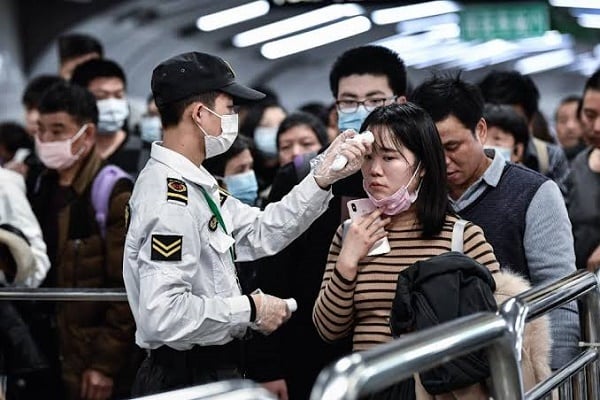There’s been noise on the new coronavirus in recent times — including the rising number of cases, the World Health Organisation (WHO) emergency meeting, and public disquiet among China’s most respected medical experts over the source of the mysterious disease.
Jokes aside, the disease has so far killed “at least 17 persons” in the Asian country, with over 500 reportedly infected with the virus — which is described as a form of pneumonia.
On the heels of its outbreak, the WHO had considered declaring an international public health emergency to allow for a coordinated global response.
The United States had also recorded its first case on Tuesday, following the arrival of a man in Los Angeles from China’s Wuhan — raising fears among policymakers.
But beyond hearsays and giving in to panic, only very few people are in the know of this “mysterious pathology,” its mode transmission, as well as the treatment options available.
WHAT IS CORONAVIRUS?
Coronaviruses are a large group of viruses that are common among animals. In rare cases, they are what scientists call zoonotic, meaning they can be transmitted from animals to humans.
A form of the disease, severally described as severe acute respiratory syndrome (SARS) like, was first identified in the 1960s from the nasal cavities of patients with the common cold. But on December 31 2019, a new strain of this virus was reported in Wuhan, China.
Leo Poon, a scientist, who decoded the virus, suggested it had been contracted from animals, although reports have had it that the disease appears not to be as lethal as the Middle East respiratory syndrome (MERS) or SARS.
WHAT ARE THE COMMON SYMPTOMS OF CORONAVIRUS?
Patients suffering the coronavirus have reported runny nose, sore throat, cough, headache, and days-long fever. But symptoms may also include a common cold-like upper respiratory disease.
Pneumonia or bronchitis has been reported among the aging population and infants as the disease is known to cause breathing problems among people with immune deficiencies.
While avoiding self-diagnoses in cases where one or more of these symptoms are observed is a priority, seeking medical attention is highly recommended if they persist after adequate rest.
Coronaviruses, which are RNA viruses, are extremely adaptable and genetically diverse. According to the WHO, kidney failure or even death could result in more severe cases.
Chinese health officials had reported that a victim of the disease had suffered renal dysfunction, heart muscle inflammation, and multiple organ damages after his condition deteriorated.
MODE OF CONTRACTING CORONAVIRUS
Amid the uncertainties surrounding talks about what animals first caused the MERS and SARS, experts don’t know yet what animal may have offset the current Wuhan outbreak.
However, when it comes to the human-to-human spread of the disease, experts say it can be contracted through direct contact with the secretions of infected individuals.
This includes the droplets in the cough of patients suffering from the disease, their sneeze, handshake, or touching something with which an infected person has been in contact.
Channels through which people may get infected then include the mouth, nose, or eyes after having had contact with the virus through the afore-described scenarios.
WHAT ARE THE TREATMENT OPTIONS?
Among the reasons why Wuhan’s coronavirus has caused a commotion — sending Asian stock markets tumbling — is that there’s no vaccine or specific treatment as research is only underway.
There are also no vaccines yet to prevent coronaviruses as the US’ National Institutes of Health’s (NIH) efforts would take months to reach clinical trials or ultimate fruition.
While the WHO had warned that it doesn’t recommend any restriction of travel or trade, experts have continued to advocate the seek-early-treatment gospel to avert deterioration and severity.
There are also fears that existing remedies address only the symptoms as doctors continue the prescription of fever medication while the Centers for Disease Control and Prevention (CDC) suggests a hot shower to relieve the cough.
Room humidifiers, adequate rest as earlier hinted, and consuming more fluids have also proven helpful reducing the severity of some of the disease’s symptoms.
WHAT ARE THE PREVENTIVE MEASURES?
One obvious way to avoid contracting the disease is keeping infected persons at arms lengths. But that could, sometimes, be better said than done — especially among the nurses.
Avoid traveling to high-risk regions while watching the rate at which you unconsciously run your palms towards your eyes, nose, or mouth.
However, if you happen to unexpectedly find yourself at the heart of Wuhan, you might want to avoid live animal markets, where the latest outbreak reportedly began.
Since coronavirus could spread by air, cover your nose and mouth with a disposable face mask to limit your risk of breathing in the virus in public places.
In highly frequented workplaces, it might help to disinfect high-touch surfaces as coronavirus can linger on doorknobs, countertops, stair railings, and even tables.
Copyright 2024 TheCable. All rights reserved. This material, and other digital content on this website, may not be reproduced, published, broadcast, rewritten or redistributed in whole or in part without prior express written permission from TheCable.
Follow us on twitter @Thecablestyle


Asking questions are genuinely good thing if you are not understanding anything fully, however this post gives nice understanding even.